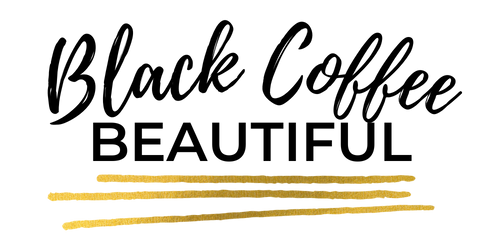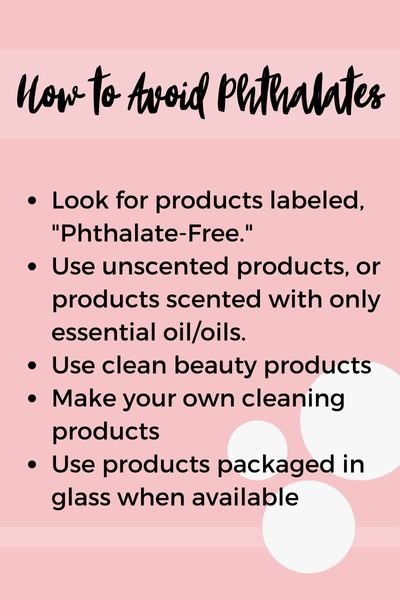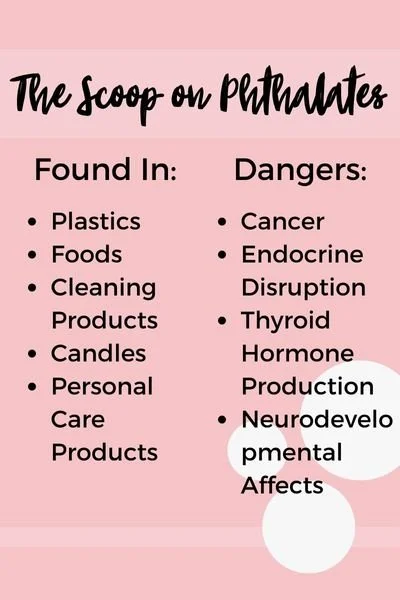What are Phthalates and Why Should You Care?
I admit, I’m one of those people who used to kind of bypass ingredient lists. I for sure never thought most things in foods and skincare were good for me, but I also didn’t know what almost all of the items were, and probably like most of you, I was too busy to figure it out.
However, I’m starting to educate myself in regards to those potentially dangerous chemicals and ingredients included in many of our foods, personal care products, cleaning solutions and more. Eliminating the bad shouldn’t be a novel concept, except that sadly, it is. We blindly purchase these products and assume “they’re fine,” not realizing the potential harm we might be doing to ourselves.
There is SO much garbage in the foods we eat and products we use, that removing all of them is a rough task, especially all at once. Instead, I’ve started tossing out one thing at a time. Last fall, it was preservatives. This spring, it became phthalates, after writing this previous post and learning just how terrible they are.
So what are phthalates?
There are several types of phthalates, but, in general, phthalates are chemicals used to make plastics more durable. A specific type of phthalate, DEP, is also used in fragrance, as it extends the life and aromatic strength of the fragrance. These types of phthalates are really in many types of fragrances, from body lotions to skincare, from cleaning products to candles. Phthalates in shampoo and other haircare products are also common.
And if you ask anyone involved in the allowance of these chemicals, from government agencies to manufactures, you’ll get basically the same response, “in trace amounts, these chemicals won’t hurt you.”
I feel like a broken record at this point because I say it so frequently regarding potentially harmful ingredients, but at what point are phthalates no longer trace? If we’re ingesting them, inhaling them, and absorbing them through the products we use, not just occasionally, but multiple times a day, are they actually trace?
What are some Products with Phthalates?
That question might be better phrased as, “what are some products without phthalates,” as they are in nearly everything.
1) First off, plastics. Just assume (unless stated otherwise) that your plastics contain phthalates. From water bottles to food storage containers, nearly all plastics use phthalates.
2) Your scented items, including candles and cleaning products, but also, your haircare, skin and body products, soaps, etc.
3) Indirect additives to many of your foods, such as dairy products, meats, fast foods, oils and more.
4) Your home. Yes, just breathing the air around you could mean you’re breathing in phthalates, as they are used in things like vinyl flooring, vinyl carpet backing and lacquers.
Are Phthalates Really that Harmful?
Not in trace amounts;) Here are some known effects linked to phthalates, in case you’re worried it might not be as trace of a chemical as some make it out to be:
Cancer, including liver. Just this past spring, the University of Vermont Cancer Center found, “a higher incidence of childhood cancers,” thanks to our friend, phthalates. You can read more about that study, in this article.
Asthma
Endocrine Disruption - they’re hormone disruptors, especially in women and children.
Male Effects: abnormalities in the reproductive system, damage to the DNA in sperm, reduced testosterone levels
Neurodevelopmental effects in infants and children which can include ADHD, aggression, depression, a lower IQ and autism.
How to Avoid Phthalates
Now that we know they’re in just about everything, in all honesty, I don’t think there is a way to completely avoid them. BUT, there are definitely ways to minimize your exposure considerably.
Look for the words, “Phthalate-Free.”
MANY companies have caught on to the fact that most of us, don’t want toxic chemicals seeping into our bodies. Imagine that. And unlike the organic food industry which can be incredibly pricey, there are a large number of brands that are eliminating phthalates from their ingredient list all-together, that aren’t expensive at all (Suave and SoftSoap, for example, have numerous products that are phthalate-free).
It can be a little confusing because as I mentioned above, phthalates are included in most fragrances. Because fragrance concoctions are considered proprietary, our government has concluded brands don’t have to tell us what ingredients they’ve included in said fragrances. That’s why when you look at the ingredient list, you’ll literally just see the word, “fragrance.” In other words, when you’re looking at the ingredient-list and don’t see phthalates, that in all likelihood doesn’t mean it’s phthalate-free.
Brands however, in an endless effort to give the consumer what they want (it’s more likely that one brand did it so the others jumped on the bandwagon) will tell you - usually in big bold letters right on the front, declaring their product is “PHTHALATE-FREE.”
Bottom line, if they don’t tell you it’s phthalate-free, assume that isn’t.
Other ways to avoid these nasty little chemicals? Choose candles or other products who use 100% essential oil instead of “fragrance.” Candles are great options for this. Try Broken Top Candles!
Choose clean-beauty products. You can find a few of my favorites here.
Use products bottled in glass versus plastic when available.
Also, and I know some of you might roll your eyes at this but you can EASILY make your own cleaning products. I’ve been doing this since March of this year and have LOVED the results. Don’t get me wrong, I still have a bottle of bleach and will buy another one when that runs out for the impossible to get out stains and such, but for my everyday cleaning, I make my own cleaning products. See how, here.
P.S. if inflation has you scraping pennies out of your wallet just to survive, making your own cleaning products is incredibly cheap!
Gimme one (JUST ONE) way in the comment section below, you’re going to start reducing your phthalate-intake.


